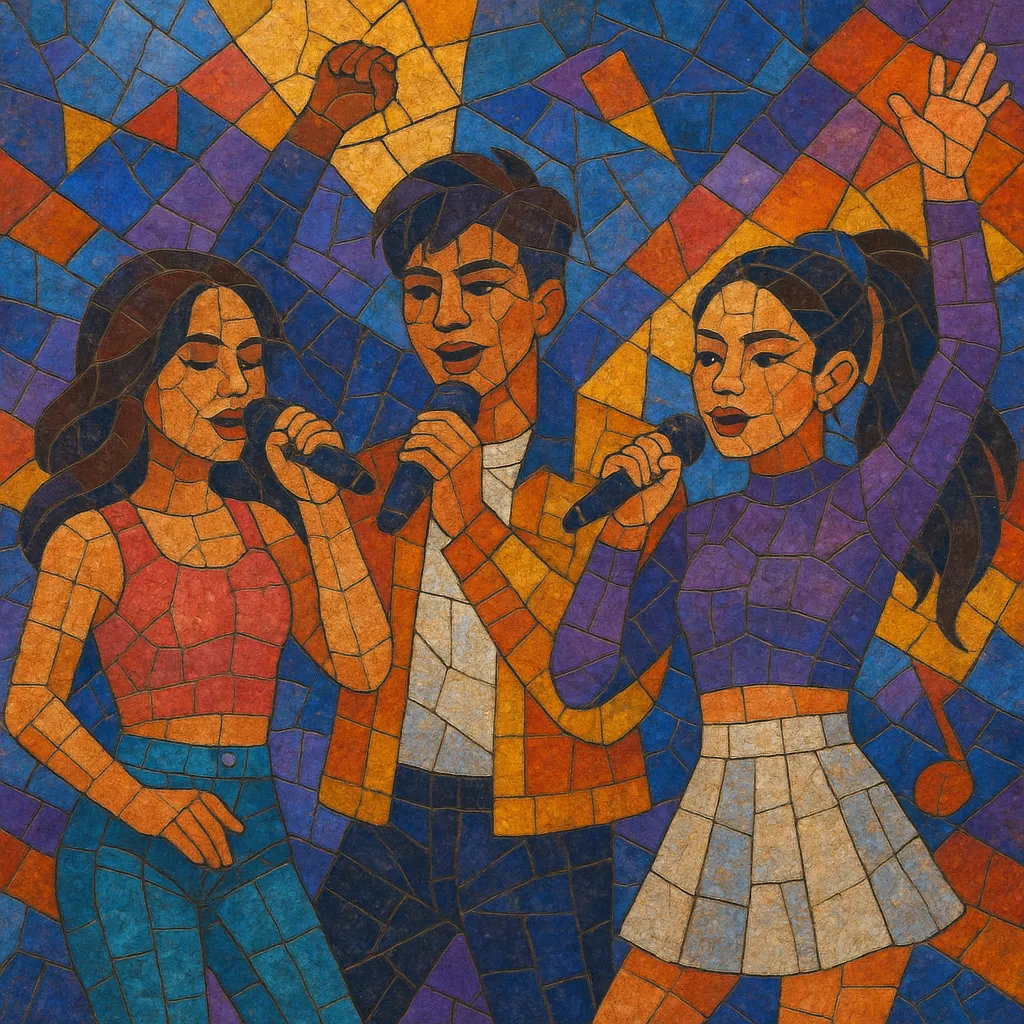P-pop (Pinoy pop) is the umbrella term for Filipino popular music, spanning slick idol groups, radio-ready soloists, and band-driven pop. It fuses local songwriting traditions with global pop currents, resulting in catchy hooks, polished vocals, and dance-centric production.
While its roots trace back to the Manila Sound and the broader OPM (Original Pilipino Music) movement of the 1970s–1990s, a new P-pop wave emerged in the late 2010s. This modern phase mirrors the high-production, performance-focused systems popularized by K-pop and J-pop—emphasizing rigorous training, synchronized choreography, multilingual lyrics (Filipino/Tagalog and English), and tightly branded groups.
Today, P-pop balances bright, danceable singles with emotive ballads, rap breaks, and R&B-tinged melodies, positioning itself as a distinct Southeast Asian pop ecosystem with global ambitions.
P-pop’s lineage begins with Manila Sound in the 1970s (e.g., Hotdog, APO Hiking Society), which made Filipino-language pop mainstream and laid the groundwork for OPM. Through the 1980s–1990s, ballads, pop-rock, and R&B-leaning hits by Filipino soloists and bands defined national pop taste and industry infrastructure.
The 2000s saw major pop soloists and TV-driven star systems shape charts and mass media. Pop production increasingly blended Western R&B, hip hop, and dance-pop, while English-Filipino code-switching became common. This kept P-pop sonically aligned with global Top 40 trends.
Inspired by the training and branding models of K-pop and J-pop, a new P-pop movement emerged. Companies adopted intensive vocal/dance training, performance polish, and concept-driven group identities. Acts began releasing high-gloss singles with choreography-forward promotions and fandom culture.
Groups like SB19 helped catalyze a domestic and international surge of interest, earning chart placements and award nominations beyond the Philippines. New ensembles—both boy groups and girl groups—expanded the scene with multilingual releases, viral performance videos, and international touring, firmly establishing modern P-pop as a Southeast Asian pop force.
Start with a clear concept (youthful, empowering, romantic, or epic). Build tight, radio-friendly forms: intro–verse–pre-chorus–chorus–rap/bridge–final chorus with a dance break or post-chorus hook for choreography moments.
Use diatonic pop progressions (I–V–vi–IV and variants), with pre-chorus tension (secondary dominants or modal mixture) resolving to a soaring chorus. Melodies should be memorable, with stepwise motion in verses and larger intervallic leaps in choruses to feel anthemic.
Target 95–130 BPM for dance-pop; 65–85 BPM (half-time feel) for trap/R&B crossovers; and 70–75 or 140–150 BPM for high-energy performance tracks. Incorporate syncopated kicks, crisp claps/snares, and punchy turnarounds to support choreography.
Blend bright polysynths, plucks, and pads with modern drum kits (808s, tight snares, splashy cymbals). Layer ear-candy (risers, impacts, reverse swells) and occasional guitar or piano for warmth. Add rap-friendly sections with sparse bass and percussive textures.
Arrange multi-part harmonies and ad-libs around a strong lead. Alternate Filipino/Tagalog and English to widen appeal. Themes often emphasize self-belief, love, friendship, and cultural pride. Include a rap verse or middle-eight for contrast.
Design a dance break: strip back harmony, spotlight drums and stabs, and leave space for synchronized moves. Use call-and-response or chantable hooks to activate live crowds and fandoms.
Prioritize vocal clarity (de-ess, multiband compression), a punchy low end (tight sidechain to the kick), and a polished top end. Bus processing and parallel compression keep energy high. Loudness should be competitive but retain dynamics for impact.


